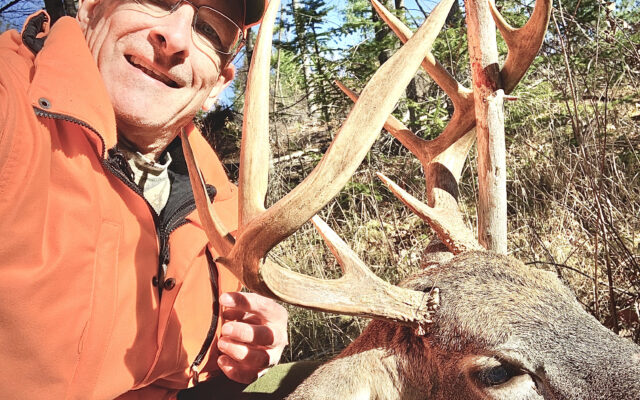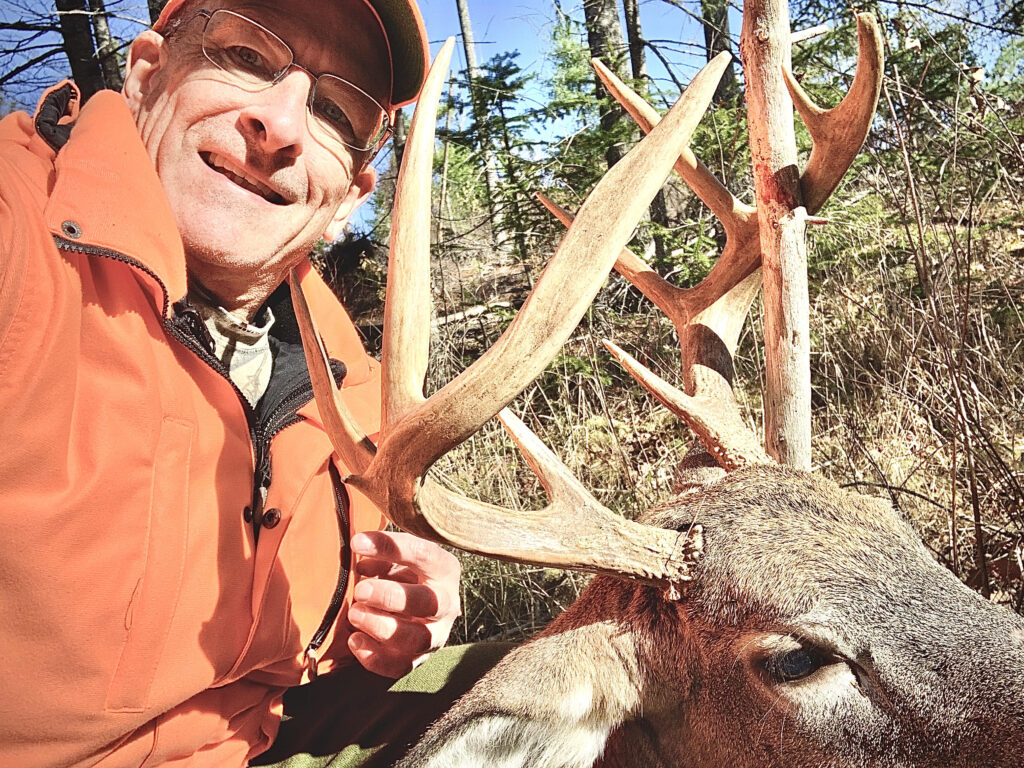
What you need to know to shoot a deer this season
By Pete Warner, Bangor Daily News Staff
Deer hunting isn’t rocket science, but it’s not easy.
There’s a reason only 15 to 17 percent of Maine hunters are successful in a given year.
However, developing a well-rounded knowledge of deer behavior, and what to look for when scouting and hunting deer, will go a long way toward helping hunters put some delicious venison in the freezer this fall.

Here are some things you can do and look for as you head into the woods this season:
Stay off the radar
Perhaps the most important thing to know about white-tailed deer is how perceptive they are. Deer have an uncanny sense of smell, excellent hearing and good vision.
That means in order to avoid alerting them to your presence, whether in the woods, along the edge of a field, or walking down a tote road, hunters will benefit from doing everything they can to stay off the deer’s radar.
To minimize your scent, you can shower with scent-reducing soaps and spray hunting clothing and boots with sprays designed to knock down unnatural odors. Often, if a deer catches wind of you before you get a look at it, there’s a pretty good chance you won’t see it.
Whether setting up in a treestand or ground blind, or still-hunting on foot, know the wind direction. Approach habitat you suspect is holding deer from downwind to help minimize the chance of the animals getting a whiff of you.
Combining a deer’s sense of smell and hearing, expect that most often bucks are likely to respond to a buck grunt or doe bleat from downwind as they hope to smell what they’re pursuing before they see it.
Minimizing human sounds is important. Talking, coughing and manipulating food packaging and other items may well alert deer to your presence.
Many hunters, whether moving or stationary, like to make an occasional grunt or bleat to help create the illusion that any other sounds they might be making are related to deer activity.
After the end of fall wild turkey hunting in early November, some hunters also throw in some turkey sounds while moving through the woods to throw off the deer.
If you’re walking, it is beneficial to stay in some cover, perhaps along the edge of the tree line, which helps break up your outline. When transitioning from darker woods into a more open area, stop and scan that space carefully before you step out.
Once you’re more visible, proceed slowly and continue to stop often to watch and listen. Try to avoid stepping on branches, sticks and ice, or walk through water or mud, which might give you away.
Look for signs
When scanning the hunting area, don’t expect to lay eyes on an entire deer. Instead, concentrate on catching movement among the trees, bushes and grass, especially subtle clues such as the turn of an ear, the flick of a tail, or the glint of the sun off an antler.
You’re more likely to see one of those signs than to get a look at the full head, shoulders and body of a white-tail. Deer live in the woods and their livelihood depends on their ability to be stealthy and stay concealed.
They’re almost always on high alert and will raise their heads frequently while walking or feeding to look around for potential predators. If you get busted, they’ll be gone in a flash.
To identify whether an area is home to deer, there are a handful of things you can look for.
The first is hoofprints, which are most visible in mud, softer earth and sand. Lots of tracks, especially if they’re different sizes, mean there are multiple deer in the vicinity. In general, the larger the track, the bigger the deer.
If you follow the tracks, you might come upon places where the grass or dirt is trampled down when compared with surrounding bushes and grass. Those likely are travel corridors, which deer routinely use to get from where they bed to where they are going to feed.
If you can find a spot that overlooks such a game trail from a decent distance away, and the wind is right, you might catch deer traveling back and forth. The best chance there probably is early in the morning and late in the afternoon.
Deer droppings also are indicative of activity. If you find a piece of woods where there are lots of droppings, especially fresh ones, it means the animals have been frequenting the location.
Know common deer activities
Other telltale signs of deer activity are scrapes and rubs. Scrapes are spots where deer paw up the ground, leaving the earth exposed. They can be a couple of feet across, or larger, and it’s common to see where the grass or leaves they removed have been scattered.
Scrapes almost always have a branch or stick hanging over them, on which bucks rub a gland located near their eye to leave their personal mark on it. They also urinate over glands in their legs, another sign to deer that they have been in the neighborhood.
You might also find a handful of scrapes in a relatively small area. It’s a good sign, but bucks probably hit those spots mostly at night, so catching one visiting during the day might be a challenge.
Bucks also remove dead tissue from their antlers and mark their territory by rubbing their antlers on trees. Those rubs, usually on the lower portion of smaller trees, result in the outside bark being removed to expose lighter colored material underneath, and are quite obvious.
Tree rubs prove that a buck is around, and what direction it was headed (coming from the direction on the side of the tree that was rubbed). It also is a dominance symbol that notifies other deer of its presence.
Another important skill for hunters is being able to recognize some telltale auditory signs of deer. That can include everything from the beat of hooves along the ground and the crunching of frozen leaves to the bleat of a doe, a buck grunt or even a snort-wheeze, which sounds like a deer blowing its nose loudly.
Finally, despite any frustrations you might encounter, remember that anything can happen during the rut. The peak of the rut, which is usually somewhere around the middle of November, can work in your favor.
Bucks become preoccupied with mating, which means they get distracted and often with their noses to the ground. That can open the door for a hunter to have the upper hand, if only briefly.
If you’re silent, concealed and observant, using what you have seen and heard in the woods can provide enough information to harvest a deer and put some tasty venison on the table this season.